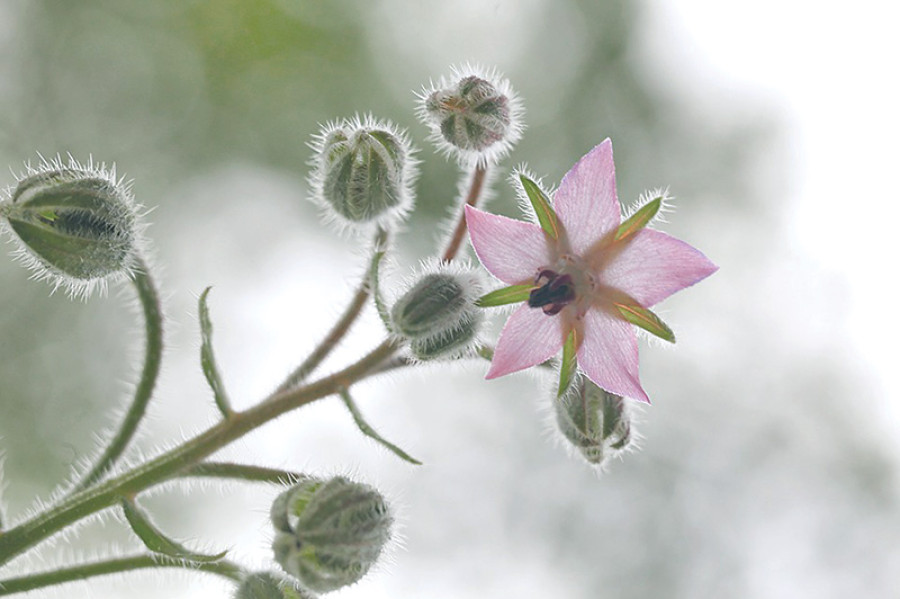Opinion
Fragrant arbour
Nepal’s topography and unrivalled diversity have rightly earned it the reputation of being a biodiversity hotspot.
Pragya Adhikari
Nepal’s topography and unrivalled diversity have rightly earned it the reputation of being a biodiversity hotspot. The country has a significantly diverse ecosystem, producing a wide range of unique and valuable medicinal and aromatic plant resources (MAPs). In fact, Nepal’s rich repositories of medicinal and aromatic plants could be our ‘green gold.’ According to the book Medicinal Plants of Nepal published by the Department of Medicinal in 1984, there are about 471 medicinal plants in the country. When it comes to flowering and non-flowering plant species, as many as 10091 of them have been recorded as per the date provided by the Medicinal and Non-timber Forest Products in Nepal (NTFP). Out of the them, 700 are of medicinal value, where 238 types were medically tested to find chemical content. Around 1600 medicinal plants are recorded in a database called ‘Medicinal and aromatic plant database of Nepal’. Most of the precious medicinal and aromatic plants are available in the remotest high hills and mid-hills areas of the country.
Single plants species can be used for different purposes. Medicinal and aromatic plants are widely used to treat various diseases (such as antisepticantimicrobial, anticancer, analgesic,anti-diabetic etc), and for religious, ritual and embellishing purposes. Tannins, alkaloids, essential oils, resins, gum, and paper can be extracted from this plant species. In the hilly areas, households are reportedly involved in the commercial collection of such medicinal and aromatic plants. What’s more, it contributes to 50 percent of the total annual family income. Nepal legally exports an estimated 6,000 tonnes of herbal products and tonnes of medicinal plants are also exported every year illegally.
MAPs make up about 5 percent of the GDP. Traditional medicine—which is prepared from locally available medicinal plant species—is used extensively by a majority of the population in Nepal for health care purposes.
Climate change is one of the greatest challenges to biodiversity as it affects all organisms. As climate is changing more rapidly, there is a high risk of mass extinction of these exotic plants species. Nepal has many reasons to be concerned about the impacts of climate change on medicinal plants. The primary health care of more than 80 percent of our rural population and livelihood depends greatly on medicinal plants.
A wide range of flora shift has been a major problem in Nepal. Most of the medicinal plants have shifted to a higher altitude and the diversity in the overall species was found declining with elevation—owing to increasing temperature. The outbreak of insects, diseases, pests has created pressure on plant species population including medicinal plants. Phenological changes, such as reproductive failure, reduced growth, leaf drop, early budburst, shift in flowering and fruiting time etc. are also increasing. Early flowering of Rhododendron arboretum, Bombax ceiba is an increasing trend in the hilly and himalayan region of a country. An unprecedented spread of invasive alien species such as Lantana Camara, Parthenium hysterophorus is increasing day by day, which has led to competition for space and resources for medicinal and aromatic plants.
It was found that stress conditions affect the secondary metabolites and other compound production which is influenced by diseases, competition between plants and so on. Some of the species such as Bojho, Kurilo, Harro, Barro, Amala, Bet Sal, Bhyakur, and Sarpagandha, etc., from the tropical zones, are highly exploited due to deforestation, overgrazing, forest fire, shifting cultivation and massive harvesting. Rapid land degradation, over-exploitation, deforestation, unmanaged harvesting for timber, firewood, overgrazing, lack of management systems have also contributed significantly to the decline in availability of these herbal and exotic plants.The potential loss of medicinal and aromatic plant species from the effect of climate change is likely to have major ramifications on the rural livelihood of Nepal.
There is an urgent need to assess the effect of climate change on phenology, species ranges, shifts and secondary metabolite production. Conser-vation of endangered plants species, including the cultivation of medicinal plants, can reduce future vulnerabilities of medicinal plants to climate change.
Maintaining genetic diversity in a natural ecosystem is key to the adaptation of medicinal plants. Establishing a designated field of gene banks that place priority on researching and committing to a multiplication of germplasm, can lead to conservation of medicinal and aromatic plants.
Livelihood diversification (subsistence agriculture to commercial farrming and ecotourism), changing calendars (pre and post farming), seasonal migration are traditional adaptation strategies.
There need to be stringent laws that stop deforestation along with limiting over-collection of medicinal and aromatic plants. Plant habitats should be maintained through water and moisture conservation practices. The spread of invasive plant species should be checked. Awareness amongst herb gatherers and their skills about sustainable harvesting practices should be developed. Lastly, farming communities should place a priority on these exotic plants for sustainable conservation.
Adhikari is currently pursuing a Bsc in Agriculture at the Agriculture and Forestry University, Chitwan.




 12.12°C Kathmandu
12.12°C Kathmandu










